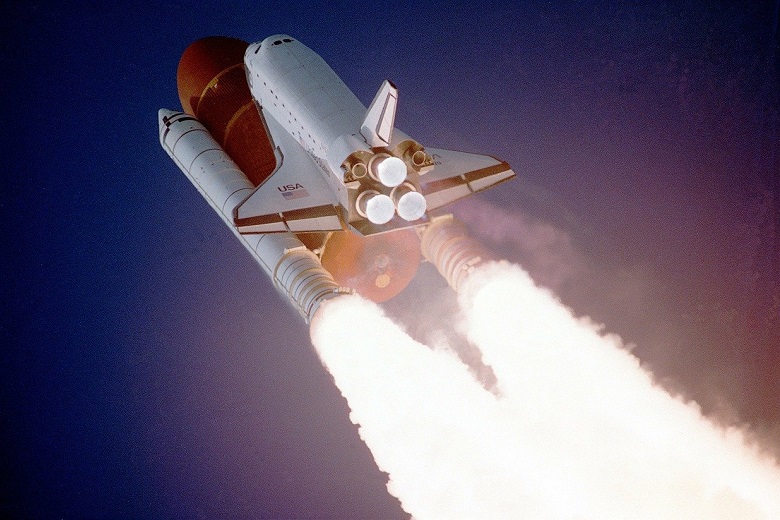The ‘Hour U’ is approaching for the runaway Chinese rocket in space, which is expected to crash somewhere on Earth this weekend. In the US, they hope that the debris will fall into the ocean, but there is also a chance that it will happen on land. In that case, the Americans will not shoot the missile out of the sky. One thing is certain: the debris will not fall on your head. Parts of Spain, Italy, and Greece are in danger zone.
For days, China’s Long March 5B rocket has been stirring up emotions. The missile was launched from Hainan Island on April 29. It was the first of eleven missions to build a new permanent Chinese space station. The rocket had the Tianhe module on board, a living space for three astronauts.
Uncontrolled returns
This week it became clear that the Chinese space agency has lost control of the rocket’s core. The design of the rocket simply does not allow the craft to be sent to crash at a certain point after launch.
The 30-meter-high core of the Long March 5B is now racing around the Earth at the height of 200 kilometers at a speed of more than 25,000 kilometers per hour (7 kilometers per second). That is much faster than most space rockets, which do return to a predetermined location on Earth.
How, where, when?
It is unclear how, where, and when the runaway missile core will descend into the atmosphere. The colossus is gradually losing height, but since it orbits so quickly around the Earth, a specific location of recording in the atmosphere is difficult to predict. That will only become known a few hours before. It is also unclear how much of the part will burn out, and thus how many debris, and how large, will come down, nor how scattered the pieces will fall.
On this website, the course of the current rocket can be followed, and the calculated future course around the Earth is also displayed. The Americans fervently hope that the rocket parts will crash into the ocean. According to the latest forecast, it is likely that this will happen Saturday night, says Defense Secretary Lloyd Austin.
The United States is closely monitoring the situation. “We’re monitoring the missile core,” Austin said at a press conference at the Pentagon. “We have no plans to shoot him at this point,” he added. “We are hopeful that the missile parts will end up in a place where they will not harm anyone. Hopefully in the ocean or somewhere else.”
South Europe
Aerospace Corp expects the missile components in the Pacific Ocean to fall near the equator after the missile has passed several cities in the eastern United States. That will be between 41 degrees north latitude and 41 degrees south latitude: so north at New York, Madrid, or Beijing or as south as Chile or Wellington in New Zealand.
According to the European space agency ESA, the debris may indeed land in Europe, probably in southern Europe. Parts of Spain, Italy, and Greece are in the risk area identified by the specialists.
“Rain of rubble”
Most missile components burn up upon reentry. It’s different in this case, says Jonathan McDowell, an astrophysicist at Harvard University. He thinks some dangerous parts will escape combustion and crash to Earth. McDowell expects the 21-ton missile core to shatter in a “rain of debris,” similar to a minor plane crash. The debris will then fall in an area of 100 miles (about 161km).
The Chinese say it will be better than expected. A State Department spokesman said today that it is “highly unlikely” that the missile core will cause damage. According to Beijing, there is no cause for concern, and a timely warning can always be given.
‘Western hype’
The Chinese tabloid The Global Times calls the allegation that the missile has runaway a “Western hype.” Sources say it is ‘not worth panic’. “Most of the debris will burn. Only a very small fraction can fall to the ground, but in areas far from human activity or in the ocean,” said Wang Yanan, editor-in-chief of Aerospace Knowledge.
Every year 150 tons of space debris falls on Earth. There were injuries but no fatalities. Last year, debris from a Long March 5B rocket crashed in Ivory Coast. Several houses were damaged in the process. “We were lucky that no one was injured,” McDowell said earlier.
“Negligence”
According to McDowell, most countries have made spacecraft safer to avoid uncontrolled crashes into Earth. That happened after large parts of the NASA space station Skylab in Australia crashed in July 1979. McDowell, therefore, accuses the Chinese of negligence. “It seems that the Chinese rocket designers have been lazy, that they have not addressed this. It’s irresponsible.”
China is busy with space projects, and if a Chinese space station is functioning, it could be the only one in the future. After more than twenty busy years, the International Space Station ISS has become ‘worn out’ and is looking towards the last years.
